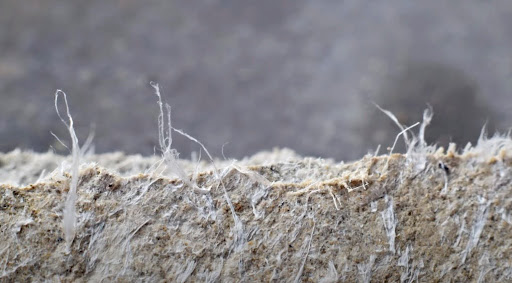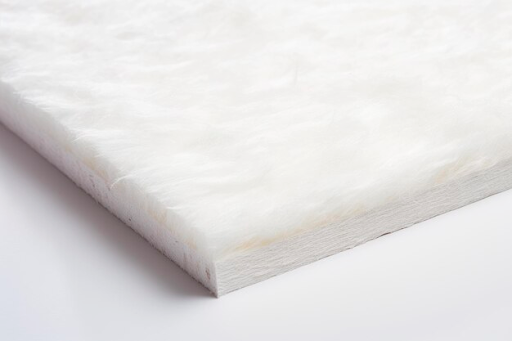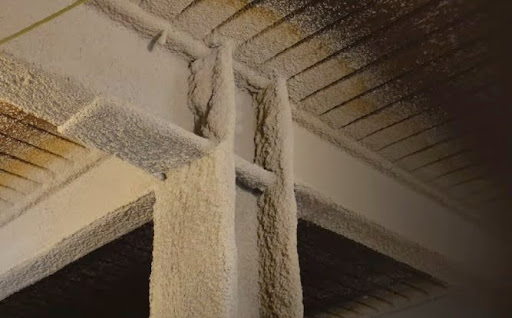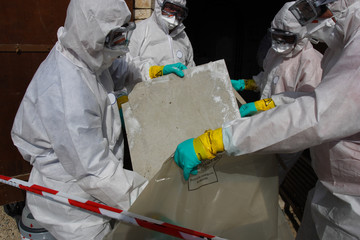Asbestos insulation in New Zealand poses a significant concern amidst the backdrop of old buildings and renovation projects. Despite its popularity due to durability and fire-resistance, asbestos’ hazardous health implications warranted strict regulations worldwide. This article seeks to enlighten homeowners, builders, amongst others on identifying and safely handling materials containing asbestos insulation by exploring their characteristics and inherent dangers specifically in NZ’s context.
Attributes of Asbestos Insulation in NZ

Before the dangers of asbestos insulation were acknowledged, it was extensively utilized in construction due to its highly heat-resistant attributes. In numerous countries, including New Zealand, older buildings can still contain this perilous substance. The ability to recognize and comprehend its nature is vital for both identification purposes and safety measures.
Appearance
It is crucial to identify the diverse forms of asbestos insulation due to their varied appearances. In New Zealand, common hues attributed to asbestos insulation are white, grey and blue. These shades may manifest in several textures and structures:
- Fluffy and Loose: Asbestos insulation is frequently discovered in a fluffy and loose texture that looks like cotton candy. This type of asbestos material can usually be found in attics or wall cavities.
- Rigid Board or Sheet: Asbestos insulation can also be found in a stiffer board or sheet format, commonly utilized to insulate walls, ceilings, pipes as well as boilers and ducts.
Common Locations
Knowing the typical places where asbestos insulation is present can assist in identifying possible points of apprehension within vintage residences and edifices across New Zealand. The subsequent areas are frequently related to asbestos insulation:
- Ceilings: Ceilings were often insulated with asbestos due to its ability to resist fire.
- Walls: In walls of older homes, particularly those constructed prior to the late 1980s, asbestos insulation could be present.
- Pipes: Pipes were insulated using asbestos, especially in heating and plumbing arrangements.
- Boilers and Ducts: Asbestos was utilized for insulating boilers, ducts, and HVAC systems.
Age of Buildings
In New Zealand, an important aspect related to asbestos insulation is its connection with the age of buildings. Prior to the late 1980s, numerous constructions in the country might have been installed with some form of this material; thus caution should be taken when dealing with properties and edifices built during that era – particularly while carrying out renovations or maintenance work.
Identifying Asbestos Insulation
Accurate identification of asbestos insulation is essential to ensure safety. Two primary methods for identification are visual inspection and professional testing:
- Visual Inspection: A visual examination can offer some insights, yet it may not always be trustworthy. Asbestos covering might not have identifiable markings and its look could differ. Nevertheless, the existence of a fibrous and chalky texture may show possible presence of asbestos.
- Professional Testing: In New Zealand, the most precise means of verifying the existence of asbestos insulation is to enlist an accredited asbestos inspector for sampling and evaluation. These experts utilize specialized tools and methodologies to scrutinize samples and deliver conclusive outcomes, ensuring utmost professionalism in testing procedures.
Health Risks of Asbestos Insulation
Safety awareness necessitates a comprehensive comprehension of the health hazards linked with asbestos insulation. Inhalation of asbestos fibers can result in severe respiratory disorders and other medical problems:
- Respiratory Diseases: Breathing in asbestos fibers may lead to enduring health conditions such as mesothelioma, lung cancer, and asbestosis.
- Other Health Issues: Aside from respiratory diseases, exposure to asbestos fibers is also associated with several other health concerns such as gastrointestinal cancers, laryngeal cancer, and ovarian cancer. These ailments may manifest years or even decades after being exposed to asbestos. It is imperative for people who might have been in contact with asbestos insulation to undergo routine medical check-ups and be vigilant about early detection methods.
Safe Handling and Removal
Asbestos management in New Zealand relies heavily on the Health and Safety at Work (Asbestos) Regulations 2016, which serve as a fundamental reference. The regulations establish detailed guidelines for handling and eliminating asbestos-containing materials (ACMs) with maximum safety precautions. Significant features of these provisions consist of:
- Identification and Assessment: It is compulsory to identify and evaluate asbestos-containing substances within the work premises. A plan of action needs to be devised for dealing with potential hazards posed by such materials.
- Licensing and Training: To adhere to safety protocols, it is imperative for those engaged in asbestos removal – whether individuals or companies- to attain the required licenses and training.
- Notification: Prior notification to WorkSafe New Zealand is mandated by regulations, before commencing any asbestos removal work.
- Safe Removal and Disposal: To ensure safety, it is crucial to adhere to certain protocols for removing and disposing of ACMs. This involves utilizing appropriate personal protective equipment (PPE), containing the materials properly, and adhering to guidelines for waste management.
Professional Removal of Asbestos Insulation
Due to the dangerous nature of asbestos insulation, licensed professionals are required for its removal in New Zealand. As per your request, here is a list of companies that specialize in this service:
| Company Name | Description | Website |
| Harcourt Insulation 2006 Ltd | This is a family-owned enterprise that specializes in insulation services for industries and businesses. They cover fire rating, asbestos removal as well mold and meth eradication solutions along with specific industrial insulations. | www.insulation.co.nz |
| Morecroft | With over 30 years of experience in asbestos removal, Morecroft is New Zealand’s largest specialist in the field. Their services prioritize safe and cost-effective solutions for all aspects related to asbestos, specifically concentrated on residential structures constructed before 2000. | www.morecroft.co.nz |
| New Zealand Restoration Services (NZRS) | NZRS specializes in asbestos removal and has gained more than 25 years of experience. They offer a wide range of services including A class & B Class asbestos removal, disposal, clean-up as well as demolition facilities. | nzrsnational.co.nz |
| Chemcare | Chemcare is recognized for delivering reliable asbestos mitigation services and ensuring safety in the process. Their focus remains on utilizing licensed professionals to manage and dispose of asbestos whilst maintaining adherence with government regulations throughout the removal procedure. | www.chemcare.co.nz |
Asbestos Insulation in New Zealand Homes: What to Do?
To ensure your safety, it is crucial to follow certain steps if the insulation in your home contains asbestos.
- Inspection: Regular inspections should be carried out, particularly prior to any renovation work. The prompt identification and evaluation of asbestos-containing materials is essential.
- Maintenance: Regarding maintenance, if asbestos insulation is discovered and remains in good condition, it may be best to leave it intact. However, be sure to regularly check for any signs of harm or declining quality. If you notice any damage whatsoever, call upon professional assistance immediately.
Alternatives to Asbestos Insulation

It’s prudent to consider healthier options than asbestos insulation due to its potential health hazards. Contemporary materials like foam, fiberglass, and cellulose offer excellent thermal and acoustic properties without the associated risks of asbestos exposure. For proposed changes in insulating upgrades or new structures, it’s best advised to seek counsel from specialists regarding what secure types of material is most fitting for your requirements.
Asbestos Insulation in Commercial Buildings
Dealing with asbestos insulation in commercial properties presents distinctive challenges and regulatory obligations.
- Stringent Management Plans: Asbestos management plans for commercial buildings are often more rigorous as they must account for increased occupancy and potential exposure risks. These detailed blueprints delineate guidelines for the secure handling, upkeep, and disposal of materials that contain asbestos.
- Regular Inspections: Performing regular inspections is crucial for commercial buildings to discover and handle any asbestos-containing materials. It’s vital that businesses comprehend the whereabouts and state of these substances present on their property.
- Worker Safety: Prioritizing the well-being of workers is crucial when it comes to commercial building operations. To minimize potential hazards, it’s essential to provide sufficient training and protective equipment while strictly following safety guidelines.
Conclusion
It is imperative to comprehend and distinguish asbestos insulation in New Zealand as it enhances the safety and wellbeing of those inhabiting or operating within ancient structures. In order to regulate this hazardous substance, identifying its traits, associated health hazards, and adopting secure techniques for handling are vital prerequisites. Through rigorous rules supported by professional aid, oversight of asbestos can be expertly administered resulting in a safer atmosphere overall.
FAQs
How can I tell if my home has asbestos insulation?
The age of your home, visual cues, and professional testing are key indicators.
What should I do if I find asbestos insulation in my property?
Do not disturb it. Contact a licensed asbestos removal specialist.
Are there health risks with living in a house with asbestos insulation?
Yes, if the asbestos is disturbed and fibers are released into the air, it poses serious health risks.
Can I remove asbestos insulation myself?
It’s highly discouraged due to the health risks involved. Always hire professionals.
How often should I check for asbestos in my home?
Regularly, especially before any renovations or if you suspect damage to older building materials.




